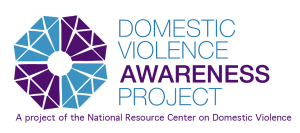Domestic Violence Awareness Month: Healthcare Leaders’ Ready-to-Use Action Guide

Key Facts:
- Prevalence: About 1 in 3 women and 1 in 4 men experience physical violence by an intimate partner in their lifetime (CDC, 2024).
- Cost: DV generates an estimated $3.6 billion in annual healthcare costs in the U.S. (Institute for Women’s Policy Research, 2023).
- Health impact: Survivors have higher rates of chronic pain, depression, and substance use disorders.
- Screening gap: Fewer than 30 % of adult primary-care encounters include routine DV screening despite Joint Commission recommendations.
Editor's Note
This article is part of the BHM Healthcare Awareness Series, designed to provide quick, ready-to-use content and links to official resources for internal staff communications, patient education, and social media.
Feel free to copy, adapt, and share.
Observation Date
October
History & Impact
Domestic Violence Awareness Month (DVAM) began in 1989 when the U.S. Congress designated October to unify efforts that were already occurring nationwide. Today, DVAM is championed by organizations such as the National Coalition Against Domestic Violence (NCADV) and the National Resource Center on Domestic Violence (NRCDV). Communities wear purple, light public monuments, and host advocacy events to honor survivors, mourn those lost, and mobilize change.
Why it Matters
Domestic violence (DV) affects physical, mental, and financial health—and the healthcare system often sees survivors first. By equipping both leadership and frontline teams with clear policies and practical tools, organizations can improve patient safety, reduce costly readmissions, and meet regulatory expectations for trauma-informed care.
Quick Actions for Your Organization
For Leadership
Integrate evidence-based DV screening questions into EHR templates and quality metrics.
Establish formal MOUs with local shelters and hotlines to streamline warm referrals.
Mandate annual, trauma-informed-care training for clinicians and security staff.
For Implementation Teams
Display discreet hotline QR codes in restrooms, exam rooms, and patient portals.
Launch a “Wear Purple Day” photo campaign to boost internal engagement and social reach.
Include a survivor-story video in October staff huddles; provide follow-up discussion guides.
Resources
Ready-to-Use Assets
The following links provide resources & information for creating internal or external campaigns to support or promote this healthcare observance. Please vet these resources for alignment with your organization.
Talking Points
Copy & Paste Friendly
“1 in 3 women experience intimate partner violence. Early screening saves lives. #DVAM2025”
“Healthcare teams play a critical role in connecting survivors to safety and support.”
“Purple isn’t just a color—it’s a call to end domestic violence. Join us this October.”
Disclaimer: Please verify all information, usage rights, and related guidelines with the official observance organizers and your organization’s policies to ensure proper alignment.
Frequently Asked Questions (FAQ)
Q1: What are the most effective ways our organization can promote Domestic Violence Awareness Month?
A1: Launch a “Purple Thursday” campaign—invite employees to wear purple on the third Thursday of October and share photos on internal and public channels using #DVAM2025 and #PurpleThursday; or host a brief lunch-and-learn with a local shelter or advocacy group to discuss available survivor services and how staff can refer patients.
Q2: How can individual staff members participate in Domestic Violence Awareness Month and make an impact?
A2: Volunteer or fund-raise for local domestic-violence programs—many shelters post October wish-lists for toiletries, gift cards, or winter clothing; or complete a free, 30-minute online training such as Futures Without Violence’s “Health Partners on IPV” module, then pledge to incorporate routine screening into practice.
Q3: How do we measure the success of our Domestic Violence Awareness Month campaign?
A3: Measure engagement metrics: Purple Thursday participation, social-media impressions, intranet clicks on toolkit links, and attendance at trainings or events.
Partner with BHM Healthcare Solutions
With over 20 years in the industry, BHM Healthcare Solutions is committed to providing consulting and review services that help streamline clinical, financial, and operational processes to improve care delivery and organizational performance.
We bring the expertise, strategy, and capacity that healthcare organizations need to navigate today’s challenges – so they can focus on helping others.
Are you ready to make the shift to a more effective process?

